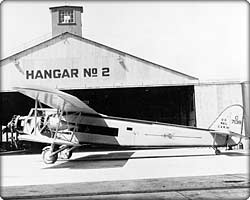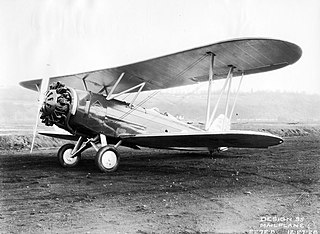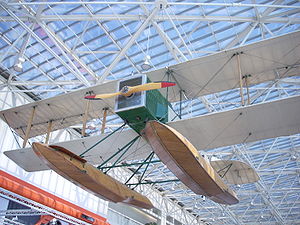
The Boeing XB-15 was a United States bomber aircraft designed in 1934 as a test for the United States Army Air Corps (USAAC) to see if it would be possible to build a heavy bomber with a 5,000 mi (8,000 km) range. For a year beginning in mid-1935 it was designated the XBLR-1. When it first flew in 1937, it was the most massive and voluminous airplane ever built in the US. It set a number of load-to-altitude records for land-based aircraft, including carrying a 31,205 lb (14,154 kg) payload to 8,200 ft (2,500 m) on 30 July 1939.

The Boeing XPBB-1 Sea Ranger was a prototype twin-engined flying boat patrol bomber built for the United States Navy. The order for this aircraft was canceled, to free production capacity to build the Boeing B-29, and only a single prototype was completed.

Boeing XB-55 was a proposed Boeing aircraft designed to be a strategic bomber. The XB-55 was intended to be a replacement for the Boeing B-47 Stratojet in United States Air Force (USAF) service.

The Boeing Model 15 was a United States single-seat open-cockpit biplane fighter aircraft of the 1920s, manufactured by the Boeing company. The Model 15 saw service with the United States Army Air Service and with the United States Navy as a carrier-based fighter.

The Boeing F2B was a biplane fighter aircraft of the United States Navy in the 1920s, familiar to aviation enthusiasts of the era as the craft of the Three Sea Hawks aerobatic flying team, famous for its tied-together formation flying.

The Boeing F3B was a biplane fighter and fighter bomber that served with the United States Navy from 1928 into the early 1930s.

The Boeing Model 40 was a United States mail plane of the 1920s. It was a single-engined biplane that was widely used for airmail services in the United States in the 1920s and 1930s, especially by airlines that later became part of United Airlines. It became the first aircraft built by the Boeing company to carry passengers.

The Boeing 80 was an American airliner of the 1920s. A three-engined biplane, the Model 80 was built by the Boeing Airplane Company for Boeing's own airline, Boeing Air Transport, successfully carrying both airmail and passengers on scheduled services.

The Boeing B-1 was a small biplane flying boat designed by William Boeing shortly after World War I.

The Boeing Model 2, also referred to as the Boeing Model C, and its derivatives were United States two-place training seaplanes, the first "all-Boeing" design and the company's first financial success.

The Boeing Model 95 was a single engine biplane mailplane built by Boeing in the United States in the late 1920s to supplement the Boeing Model 40s being used on Boeing's airmail routes.
The Boeing Model 7, a.k.a. Boeing BB-1 was an American biplane flying boat aircraft built by Boeing in the 1920s. The pilot and two passengers all sat in the cockpit, the passengers right behind the pilot.
The Boeing Model 203 was a three-seat biplane trainer build by Boeing in the late 1920s and used in the company training school.

The Boeing Model 64 was an American single engine biplane training aircraft built by Boeing in the 1920s that failed to gain any orders.

The Boeing Model 6D, a.k.a. Boeing Model 6E, Boeing B-1D and Boeing B-1E, was an American pusher biplane flying-boat built by Boeing between 1928 and 1929.
The Boeing Model 42 was an American biplane aircraft developed from the Airco DH.4, taking advantage of the large number of aircraft left over after the end of World War I.

The Boeing Model 204 was an American biplane, pusher configuration flying-boat aircraft built by Boeing in 1929. Externally, the 204 looked identical to the Boeing Model 6E, but a number of internal changes, including increasing the passenger capacity to four, gave it a new type certificate and model number.

The Boeing Model 81 was an American training aircraft built by Boeing in 1928. The Model 81 was a development of the Model 64. It was powered by a newly developed engine, the 125 hp Fairchild-Caminez 4-cylinder radial engine. Operating at a much lower rpm than most engines it required the use of a large high-pitch propeller.

The Boeing XPB was an American twin-engined biplane long-range patrol flying boat of the 1920s. A single example was built for the United States Navy.

The Curtiss Model 41 Lark was a commercial biplane manufactured by Curtiss Aeroplane and Motor Company that was used by pioneering airmail, airline and bush pilots in the 1920s.

















